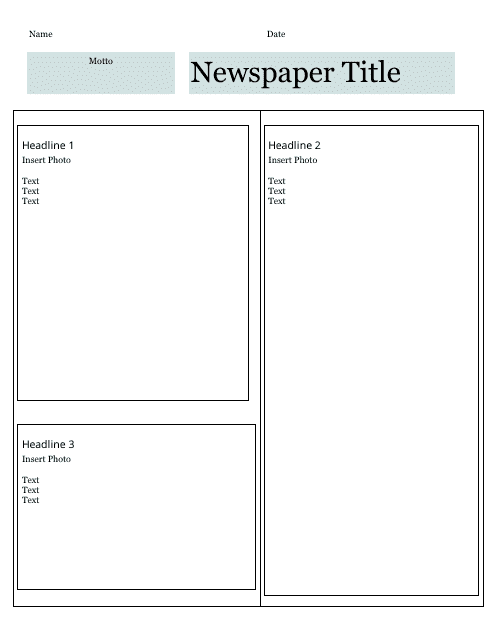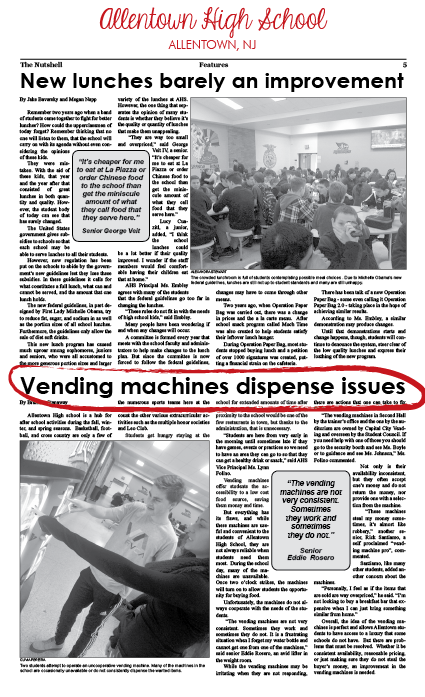
While it is said that Pablo Picasso developed the reductive method in linoleum in the late 1950s, this myth has been debunked. Pablo Picasso, Femme Nue Cueillant une Fleur, edition in 4 colors Pablo Picasso, Femme Nue Cueillant une Fleur, first color Nevertheless, this technique has gained traction of late some artists clearly think the pros outweigh the cons. And carving too much can mean starting from scratch.
Newspaper headline examples block printing registration#
In most cases flawed registration requires for the impression to be rejected. If anything goes wrong at printing, or if an artist carves too aggressively, it can be difficult to redress the situation. The artist needs to plan ahead carefully. Each color has to be printed on each sheet of the edition before the block can be carved further, and before the next layer of color can be added. The major drawback is that this process is a one-way street. It is also easier for an artist to see what was printed in the previous color, simply by using the previous printed color as a reference. The paper can be marked so it lines up in the same place each time (or it can be cut to a specific size, and also placed on a template). As long as the matrix is placed in the same spot each time at printing (often with the use of a template), the only moving part, so to speak, is the paper. A printmaker can easily register the colors, since they all come from one and the same surface. And even for linoleum blocks, which are generally more consistent in texture than wood, transferring the color outlines from block to block, so they line up perfectly, is laborious and fraught with possible errors.Īnd so the reduction print came into existence. This may seem easy to do in our contemporary reality of pixels, but hundreds of years ago, lining up uneven planks of wood could be a challenge. One of the main difficulties of printing in color is that all matrixes need to line up precisely. This technique was adopted in the Western Hemisphere in the 19 th century, first in lithography, then in intaglio and other printmaking techniques. In this technique individual blocks are registered to line up perfectly, so that one color is positioned exactly next to the other.

This technique is called mokuhanga (木版画).

Traditional color printmaking was developed using wood planks in Japan many centuries ago. K atsushika Hokusai - Under the Wave off Kanagawa So we decided to introduce it in greater detail. A few of the artists represented by Mesh Art Gallery use this technique and we think their work is amazing. It consists in using a single matrix or block (linoleum or wood respectively) to print all colors of the composition. In addition to brilliant copies of textiles, there were panoramic landscapes, battle scenes, grottos and Gothic and Rococo Revival designs.Color linocut reduction prints and color woodcut reduction prints basically utilize the same technical trick. In dodging the tax by simplifying designs into stencils, English manufacturers lost out badly to the French whose repertoire was endless and boundless. Forging wallpaper stamps (or anything else) was by 1806 among the long list of offences punishable by death. In 1712 a property tax on wallpaper had been introduced under Queen Anne and remained in force for 124 years. The botanist Sir Joseph Banks praised the Chinese painters for their accuracy, observing in his Journal in 1770: “Some of the plants which are common to China and Java, such as bamboo, are better figured there than in the best botanical authors.” The printing is so fine that the papers were originally assumed to be hand painted rather than block printed. Examples survive at Ightham Mote and Felbrigg, where the wallpaper in the Chinese Bedroom is recorded as having been hung in 1752 by a London paper-hanger called John Scrutton.


 0 kommentar(er)
0 kommentar(er)
